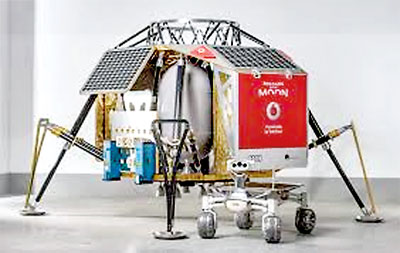Imagine part-time scientists working on a side-project to reach the moon?
We won’t be surprised if you abandon reading this further, but at the same time your curiosity will be piqued at this ridiculous idea that you just might read it to share with your colleagues tomorrow at work.
Like many before him, Robert Boehme, CEO and Founder PT Scientists, a start-up grew up being inspired by great science-fiction writers such as Isaac Asimov and Jules Verne. But space seemed to be restricted to a few large national space agencies – not people like him, you or me.
“When I heard about the challenge that was set by the Google lunar XPRIZE (an unprecedented competition to challenge and inspire engineers, entrepreneurs and innovators from around the world to develop low-cost methods of robotic space exploration), I was intrigued and brought some people together to discuss whether it was possible to reach the moon. We didn’t find anything that seemed impossible, and the rest is history!” he smiles when the Business Times contacted him.
Part time to the moon
PTScientists, based in Germany was originally called ‘Part-Time Scientists’ and it was founded by Robert and a small number of engineers and scientists from around the world. “Back then it was a side-project, and we really were working ‘part-time’ on it, but now we have dedicated ourselves to the mission, gained international technology partners, and hired a team of smart people to make this possible,” he says.
The technology that PTScientists have developed encompasses two main elements ALINA – their spacecraft that will soft-land on the moon, and the Audi lunar Quattro Moon rovers. “In future we imagine that people might want to licence these for their own missions, but really what we’re offering is a complete lunar transport solution,” he says.
They believe that the demand for lunar payload delivery and research opportunities will grow.
“Now our aim is to conduct the first privately-funded scientific mission to the moon and revolutionise space exploration – by making it available to many more people,” Robert adds.
He says that PTSceintists are committed to helping non-space-faring nations, universities and industrial partners gain access to the moon and beyond!
Working with world-class technology and research partners from around the world it can’t be that hard.
“We have planned a ground-breaking mission that will return to the site of Apollo 17, carry out the first lunar plant growth experiment, and conduct a technology demonstration that we hope will be the first step towards creating a reusable communications infrastructure on the Moon – and that’s just for starters,” Robert smiles.
He says that one would be surprised how many things that “we now take for granted on earth” have come from research and developments in space. “The sensor in the camera in your smartphone for example was originally developed by engineers at NASA who needed smaller and less power-hungry, cameras for interplanetary missions. Who knows that new technologies we develop could be the next big thing on Earth?”
PTScientsts are currently staying focused on its first mission – ‘Mission to the Moon’. “We have a number of scientific objectives and technology demonstrations that we will carry out during our mission,” Robert adds.
This will include testing the four-wheeled Audi lunar Quattro rovers, which are designed to cope with the harsh environment of the lunar surface, send live video back to earth, and carry up to 5 kg of scientific payload, allowing them to take measurements in different locations on the moon.
“One of our key objectives is to revisit the original NASA Lunar Roving Vehicle that’s been sitting on the Moon for 45 years. We will need to drive several kilometers in order to take high-definition images and this requires us to have reliable power and communications capabilities,” Robert says noting that they are also doing a technology demonstration with Vodafone using LTE data transfer as a communications system between their lander and the rovers (which can also send data direct to Earth using traditional common methods).
PTScientists hope that by delivering the first LTE base-station to the moon it will be taking the first steps towards creating a lunar infrastructure for future missions to use. “The technology is already commercially available on earth, meaning that future missions need not develop their own proprietary communications systems, but instead connect via LTE,” Robert explains noting that they are still at the beginning of the commercial space boom. “I think we will see increased interest in the sector, especially when people realise that space exploration is no longer restricted to large national agencies. I think that we will see increased cooperation between public and private space organisations, and I look forward to PTScientists becoming a valued and reliable partner-especially in terms of building necessary infrastructures and providing end-to-end solutions for lunar transportation.” Next destination? The moon!


